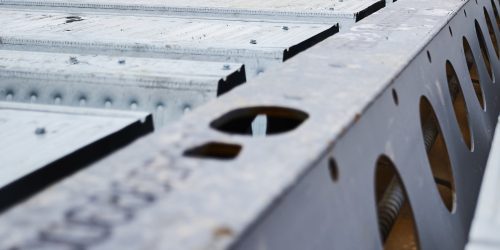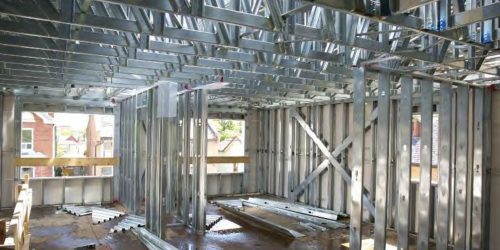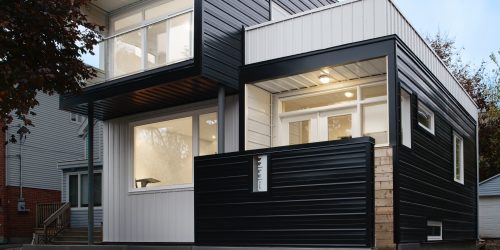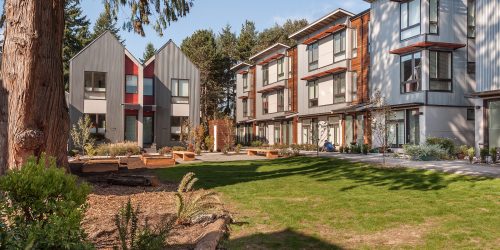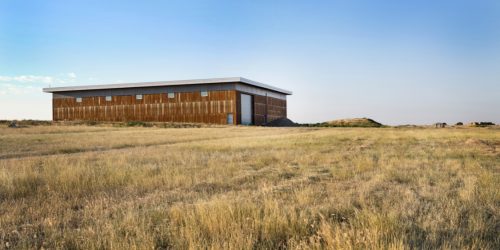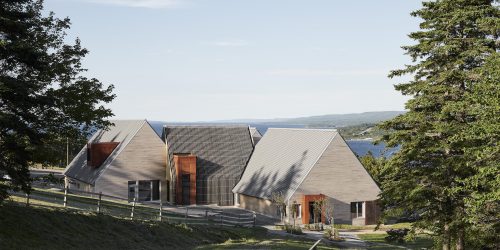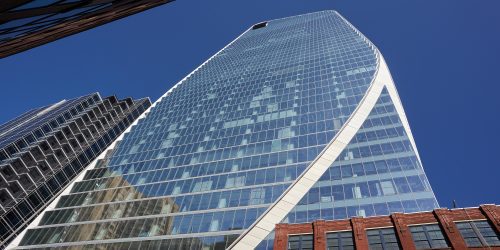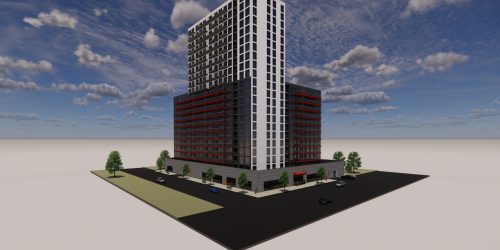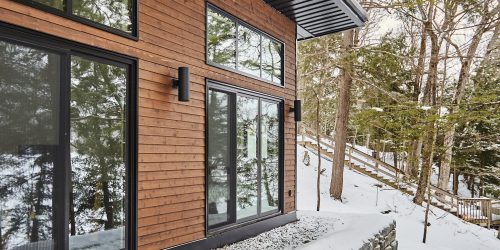This is the Future of Steel Construction
What are engineers saying about new XCarb® EPDs?
Story: Ian VanDuzer
Photography: Sandra Mulder & Andrew McDermid
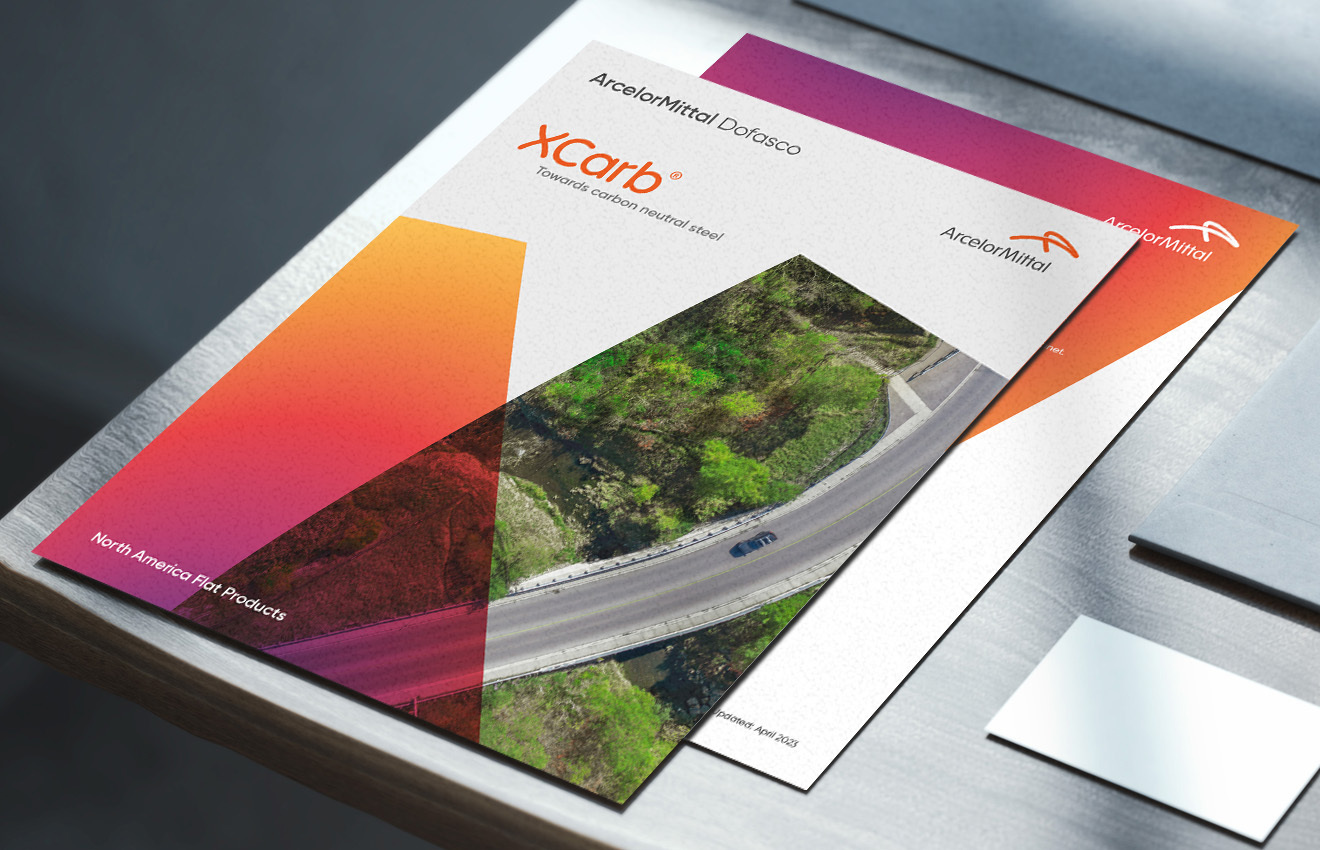
Today’s architects and engineers are faced with a growing problem. In an economic climate that wants to build, build, build – whether it’s high-rise, high-density housing; public facilities such as recreation centres, schools, and hospitals; or towering offices for real estate developers – those who design these buildings must consider more factors than ever before.
And there’s one factor that – at least in the steel industry – is becoming more and more prominent: embodied carbon.
“Clients aren’t just looking at the efficiency of operating their buildings anymore,” says Dominic Mattman, an Associate at RJC Engineers in Toronto. “They’re looking at what’s going into those buildings during construction, and into the materials.”
Today’s ‘green’ buildings are energy efficient, yes, but they also have low carbon footprints due to the materials they are made from and used during construction. For those looking to hit ambitious carbon targets, one piece of documentation is proving its importance: Environmental Product Declarations, or EPDs.

The Importance of Being On Paper
If a word describes Ian Mountfort, Principal at Blackwell Structural Engineers, it’s ‘informed’. “Most of my work is in the public realm,” he says. “That means ‘fixed budget.’ So, you need to be innovative. You really need to refine your solutions. You need to be pretty thoughtful about optimization.”
Embodied carbon targets are adding a wrinkle to Mountfort’s already accountable design. “If you want access to certain funding – or even a building permit in some circumstances – you need to meet these benchmarks and targets,” he explains. “It’s not just from the [federal or provincial] government. It’s the municipalities pushing these targets.”
Andrew Voth – another Associate at RJC Engineers with Mattman – says the same thing. “It’s absolutely a growing trend where authorities are implementing standards that they want within cities and municipalities,” he says. “But also, our clients are becoming very savvy with respect to the energy they’re putting into their buildings.”
For Mountfort – who is currently working on a new recreation centre building in Downtown Toronto - hitting ambitious carbon targets isn’t just for economic or environmental benefit: there’s good PR as well. “For municipalities, public works, these projects embody what these governments want to say about themselves,” he explains. “They embody the values of the community, and so if the community is one that is conscious of climate change, then that’s something that needs to be reflected in the building too.”
With pressure coming from all sides to hit these targets, engineers like Mountfort, Mattman, and Voth have all stressed the importance of EPDs in their work. “It’s impossible to design a whole building without those documents,” Mattman says. “It's a critical piece of the equation, and it helps us quickly identify the relative benefits of different products, different materials, different structural systems.”
“They’re the tools that we need as engineers to make educated, informed decisions about how we're going to build a greener building.”
“With how conscious our clients are becoming, it's incredibly important that we have the right information to present,” Voth says. “And to be able to explain it in a way that is quite accessible, because they're not the subject matter experts.”
“I think EPDs are vitally important,” Mountfort says. “But, more specifically, we need Type-3 EPDs that are plant-specific, and that are verified by a third-party organization. With Type-2 EPDs, they can kind of cloak steel that’s coming from primary processes and secondary processes, so you don’t really know what you’ve got on your project.

ArcelorMittal’s XCarb® EPDs
When it comes to specific documentation, all three engineers spoke highly of the latest EPDs published by ArcelorMittal regarding their XCarb® sustainable steel products. The EPDs – first published late 2023, and initially profiled in March’s Steel Design article “Steel Receipts” – contain information on a variety of XCarb® products, including corrugated steel pipe, structural steel, and cold-formed sections.
“They're quite impressive, in terms of what ArcelorMittal has been able to achieve in reducing the carbon footprint of those products,” Mattman says. As a specialist on reducing embodied carbon in products used in RJC projects, he’s spent time going over the XCarb® EPDs. “They're substantially lower than other similar products out there in the market.”
More than just the raw numbers, what Mattman finds impressive is the wide breadth of information contained in the EPDs. “There’s Grave-To-Cradle information in there, too,” he explains. “It really highlights the renewability of these steel products. When you deconstruct your building in 50, 70, or 500 years, that steel can be repurposed, it could be reused in another building, it could be brought back and recycled into new structural steel.
“That’s important information that is not usually included within environmental product declarations.”
Mountfort is similarly impressed with XCarb® – so much so that he has recently made a huge shift in his latest project, replacing long spans of timber truss with simpler, stronger, and surprisingly lower embodied carbon XCarb®. “At Blackwell, we're really committed to timber design,” he says. “We're really good at it. We've done a lot, and we'll continue to do a lot. But I think what we want to do is make sure that we're interrogating that idea that the most sustainable design is a timber design.”
The XCarb® EPDs, Mountfort explains, are the key to breaking down those biases so that engineers like him can rely on numbers, instead of preconceived notions.

The Future of Steel Design
What these EPDs really prove, though, is that steel can continue to play a huge role in the future of construction. It’s no secret that the current steel industry is on the higher end of pollution and carbon emissions – the industry as a whole is responsible for between 7-10% of global carbon emissions. In a business climate where all stakeholders – clients, communities, regulators, and governments alike – are placing higher emphasis on decreasing embodied carbon, does steel have a future in the industry?
"[This is why] we do want EPD’s for steel!” says Jason McLennan, the Chief Sustainability Officer at Perkins&Will, and a founder of the Living Future's Institute. “It is especially important to understand accurate information on the emissions and carbon footprint of all our materials - and especially one so important as steel. If we could, with more certainty, specify low carbon steel for projects, we’d try to do that."
“Steel needs to prove itself, in a sense, if it can become a greener material as a whole,” says Voth. “But we use steel in a lot of creative ways because of its versatility. Steel can accomplish things, like very long span structures, unique geometries, interesting shape and form that our architectural friends want to use in buildings.
“That’s not going to go away.”
“The XCarb® EPDs are good to see, because it shows what's possible,” Mattman says. “And these advancements, these products, are going to push the industry forward.”
Specifications
CONTRIBUTORS:
Dominic Mattman - RJC Engineers
Andrew Voth - RJC Engineers
Ian Mountford - Blackwell Structural Engineers
Jason McLennan - Perkins&Will
INTERVIEWER/AUTHOR:
Ian VanDuzer
PHOTOGRAPHY:
Sandra Mulder, Andrew McDermid
